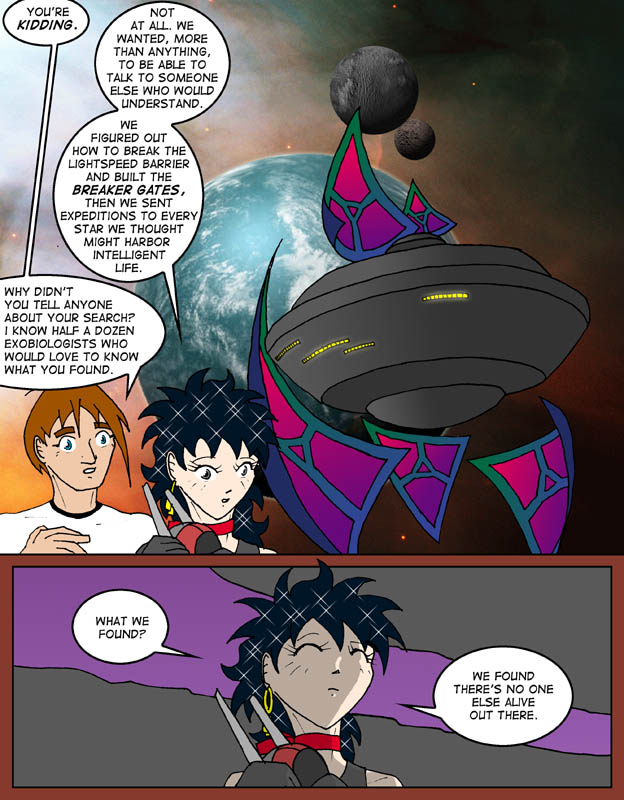
| ||
|
(Jon sez:)  I once read an interesting apologia for the SETI program which
stated that the discovery that we are alone in the Universe would be as
important, in the long run, as the discovery that we aren't alone.
I once read an interesting apologia for the SETI program which
stated that the discovery that we are alone in the Universe would be as
important, in the long run, as the discovery that we aren't alone.
The great silent chasms of the night, without anyone else in them, would call to us and challenge us. As a species, we humans don't like empty places. We fill them - either with our homes and farms, or with mythic heroes and legendary dangers. As the blank space on the old map said, "Here there be dragons." And if there aren't really any dragons there when we finally explore the place, we feel compelled to put some dragons of our own there - whether it's a sailing ship with its great thunderous canvas wings or a rocket with its tail of fire. We will eventually explore and fill the void. It's what we do. It's who we are. |
(Mark sez:)  Man, that is one garish starship.
Man, that is one garish starship.
The planetary imagery in today's experiment appears courtesy of Celestia. Many people (including yours truly) have taken a stab at the lucrative genre of planetarium software, but Celestia by far outclasses all its competitors. By pointing and clicking you can seamlessly travel between all the moons and planets of the solar system, visit comets, asteroids, and spacecraft, then zoom out to stars hundreds of light years away, visit extrasolar planetary systems, and even travel outside the galaxy altogether. Celestia is free open-source software and is available for Windows, Linux, and MacOS, so you really have no excuse not to try it out. |
|